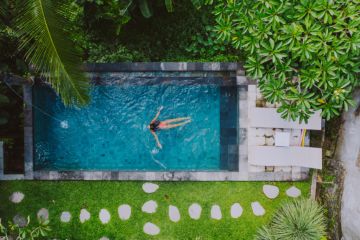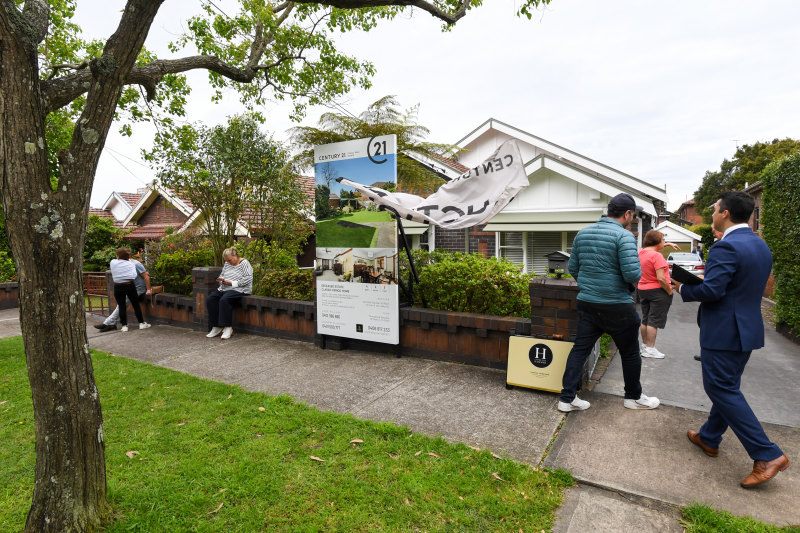Life on a boat: People living in the middle of the ocean

Paul and Susie Willison are living the dream on board their 45-foot catamaran, Queimarla (an Indigenous word meaning “big girl”). They moved onto the boat two years ago with their daughters, now aged 11 and eight.
They both share a love of the ocean and grew up around boats. “To live on the boat was always our aim,” says 44-year-old Susie. “We just took the leap a couple of years ago. It seemed like the right time to go and do it.”
The family spend summer anchored in Geographe Bay, south-west of Perth. When the weather cools, they start the 1500-kilometre journey to their wintering grounds – the Montebello Islands, 220 kilometres north-east of Exmouth. Along the way, they stop intermittently near towns, doing day trips in to work – Susie as a rural GP and Paul relief teaching. They don’t plan jobs too far in advance, because this would necessitate sailing to tighter deadlines and therefore risking harsh weather.
Paul’s teaching background positions him to look after their daughters’ education. The School of the Air provide work packs and a daily 45-minute internet lesson, which Paul, 53, oversees. Both he and the kids thrive on it. “It’s the best job I’ve ever done,” he says. “They’re great little independent learners …The moment they choose not to be cooperative or things drop off then that will force us to abandon this lifestyle.”
Paul has a Master Certificate IV in Maritime Operations, which enables the family to travel safely. “It’s his skills that allow us to be able to do what we do, and his confidence, says Susie. “We’re conservative with our children on board. We don’t go out and brave storms or anything unnecessarily.”
Nor do they spend much time in the middle of the ocean. Rather, 90 per cent of their year is spent “at anchor somewhere beautiful – living, fishing, diving, surfing, loving, music, art, joy, cooking … Your life is something beautiful without school interfering too much,” Paul says.
Apart from the freedom, the couple relish their family time, and being removed from the pressures of contemporary society. “It is really wonderful for family to be so close and also removed from many of those undesirable influences of popular culture,” says Paul. They don’t have a television, but do have a laptop and family iPad, which are used more for education than entertainment.
Their nomadic lifestyle necessitates some planning – they visit the mainland about once a month, to shop and dispose of rubbish. They carry a six-month supply of non-perishable food, ration their fruit, and make their own water with a desalinator. Solar panels and a wind generator provide their power, but occasionally they need to run a petrol-powered generator.
Related: The family more at home on the move
Related: Four alternatives to a traditional house
Related: Inside the leafiest home in Australia
Regarding their lifestyle, Susie says, “I don’t reckon it would be for everyone but it’s certainly for us … While it’s working we’ll keep doing it.”
The freedom and adventure of life on the sea is also what enticed Hannah Taylor, 28, to her ocean-going lifestyle. “There’s a lot of spare time to go diving, spearing, surfing, cooking, reading and exploring wherever you are, all from your own little home,” she says.
She and her partner James, 33, live on their 37-foot catamaran, Tangaroa, for six months each year. Over this time, they sail from their home state of South Australia across the Great Australian Bight and up the coast of Western Australia.
While on board, they live self-sufficiently, using solar and wind power, catching fish and carrying water in jerry cans, meaning they sometimes forego a shower. “We are almost hippies on the ocean … We can’t afford a big expensive luxurious catamaran, so we are kind of camping on the water,” says Hannah. “But we are doing it while we are young and don’t want to waste our life working for material possessions because we could die tomorrow.”
They love the spontaneous wildlife encounters – including diving with humpback whales, dugongs and even sharks. When they were anchored inside Ningaloo Reef, seeing a bait ball sparked Hannah’s curiosity. “I flew the drone and got some amazing footage and realised there were about 1000 sharks feeding on it,” she says. “We jumped in for over an hour swimming around in the middle of the action!”
To fund their adventures, Hannah does seasonal work, which has included driving a combine harvester, working with a winemaker in the Margaret River, and running 4WD tours in Shark Bay.
It’s not hard to see where her contentment comes from: “When you sail into an anchorage that is so remote with no one around, white beaches, turtles, blue clear water and the sun’s setting over the horizon and all you’re worried about is catching a fish for dinner … I don’t really have anything else I want or need.”
We recommend
We thought you might like
States
Capital Cities
Capital Cities - Rentals
Popular Areas
Allhomes
More







